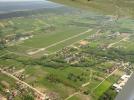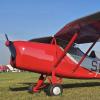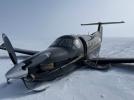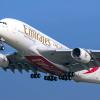Cebu Pacific at Puerto Princesa on Jan 11th 2011, runway excursion on landing
A Cebu Pacific Airbus A319-100, registration RP-C3190 performign flight 5J-645 from Manila to Puerto Princesa (Philippines) with 129 passengers and 6 crew, landed at Puerto Princesa around 19:00L (11:00Z) but veered off the runway, burst a nose gear tyre and damaged a number of runway edge lights. No injuries occurred. The aircraft sustained substantial damage.
The airport was closed over night until the aircraft was moved off the runway area and debris was cleaned. The runway edge lighting is expected to remain unavailable until Thursday morning (Jan 13th 01:00Z).
No Metars are available, the local weather station reported light rain, visibility beyond 10km and winds at 8 knots from the east about 2 hours prior to the occurrence to southwest one hour after the occurrence.
The Civil Aviation Authority of the Philippines (CAAP) released their final report concluding the probable causes of the incident were:
Primary Cause Factor
- Lack of pilot event proficiency in non-precision landing (VOR/DME) with low visibility. Human Factor. Pilot Error.
The pilot failed to maintain adequate alignment until the touchdown with low visibility.
- Poor judgement of Pilot. Human Factor. Pilot Error.
The pilot failed to make a GO-AROUND even at the time when a GOAROUND was necessary as indicated by unstabilized approach conditions until before touchdown.
Contributory Factor
The sudden change of weather (Low precipitation to high precipitation) and loss of visibility especially during the night has rendered the PIC proficiency training in this kind of scenario as inadequate.
Underlying Factor
Inadequate Pilot Training in non-precision, low visibility approach and landing. Human Factor. Training.
The recurrent training undertaken by the PIC every six (6) months is likely inadequate specifically in techniques and skills in maintaining stabilized approach and making decisions for the necessity of a GO-AROUND.
The Company’s Operations Manual clearly states the procedures on when to conduct a Missed Approach. It is most likely not given adequate emphasis during recurrent and proficiency training.
The CAAP reported that the captain was pilot flying. The aircraft performed VOR/DME approach to runway 27, Tower advised the runway was wet, the winds were steady at 7 knots from 280 degrees. The aircraft touched down on the runway right main gear first about 2 degrees off the runway heading, ground spoilers deployed, engines were retarded, the nose gear touched down and bounced, the right main gear exited the paved surface of the runway about 400 meters further down the runway then all gear departed the paved surface of the runway, the captain steered the aircraft back onto the runway with all gear back on paved surface another 400 meters further down the runway and brought the aircraft to a stop within the runway edges close to the left hand edge of the runway about 1300 meters after touch down. The crew advised that the aircraft was unable to vacate the runway, the passengers disembarked onto the runway, the aircraft was subsequently towed to the apron.
The CAAP reported the aircraft received substantial damage to the main landing gear, fan blades of both engines, aircraft belly and underwings.
The CAAP reported that the data of the flight data recorder showed the aircraft was never aligned with the runway center line.
Although the conclusions refer to low visibility the report never mentions the actual visibility at the time of landing.
http://avherald.com/h?article=43617474














Komentarze